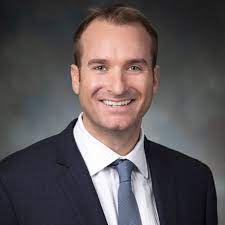Anesthesia is a medical marvel that has transformed surgical and medical procedures, making them safer and less painful. When it comes to pediatric anesthesia, ensuring the comfort and well-being of young patients is of utmost importance. In this article, we will explore the world of anesthesia for children, the various types, and the critical role of pediatric anesthesiologists, as explained by Dr Brian Blick Elk city, a respected physician based in Elk City, Oklahoma.
Understanding Pediatric Anesthesia and Its Purpose
Pediatric anesthesia is the use of medications to induce unconsciousness, relieve pain, and eliminate sensations during medical procedures in children. The primary goal of pediatric anesthesia is to ensure the child’s comfort and safety during surgery or other medical treatments. Dr Brian Blick MD emphasizes that pediatric anesthesia is tailored to the unique needs of children, taking into account their age, weight, overall health, and the specific procedure they are undergoing.
Different Types of Pediatric Anesthesia
Anesthesia for children encompasses various types, depending on the nature of the procedure and the child’s age and health status. The primary types of pediatric anesthesia include:
General Anesthesia: This form of anesthesia renders the child unconscious and unresponsive to pain throughout the procedure. It is commonly used for surgeries that require the child to be completely asleep, such as major surgeries or complex procedures.
Local Anesthesia: Local anesthesia is administered to numb a specific area of the child’s body, typically for minor procedures like suturing a wound or removing a small skin lesion. It allows the child to remain awake and alert during the procedure while ensuring they do not experience pain.
Regional Anesthesia: Regional anesthesia is used to block sensation in a larger area of the body. It is often employed for surgeries involving the extremities or the lower half of the body. Techniques like epidural anesthesia or nerve blocks may be used to provide pain relief while allowing the child to remain conscious or lightly sedated.
The choice of pediatric anesthesia depends on factors such as the child’s age, the type of procedure, and the preferences of the pediatric anesthesiologist and surgical team.
The Role of Pediatric Anesthesiologists
Pediatric anesthesiologists are specialized medical professionals with extensive training and experience in administering anesthesia to children. They play a vital role in ensuring the safety and well-being of young patients during medical procedures. The responsibilities of a pediatric anesthesiologist include:
Preoperative Assessment: Pediatric anesthesiologists conduct a thorough evaluation of the child’s medical history, overall health, and specific needs to determine the most appropriate anesthesia plan.
Medication Management: They select and administer the right medications to induce and maintain anesthesia, ensuring the child’s comfort and safety throughout the procedure.
Monitoring: Pediatric anesthesiologists continuously monitor the child’s vital signs, such as heart rate, blood pressure, oxygen levels, and breathing, to promptly address any changes or concerns.
Pain Management: They optimize pain relief for the child, adjusting medications as needed to ensure a pain-free and comfortable experience.
Communication: Pediatric anesthesiologists maintain open communication with the child, parents, and the surgical team, explaining the anesthesia process and addressing any questions or concerns.
In conclusion, pediatric anesthesia is a crucial aspect of pediatric surgery and medical treatments. Dr. Brian Blick MD emphasizes the significance of informed discussions between parents and pediatric anesthesiologists to determine the most suitable anesthesia plan for their child. With the expertise and dedication of pediatric anesthesiologists, young patients can undergo procedures with the utmost comfort and safety, providing peace of mind to both children and their families.



